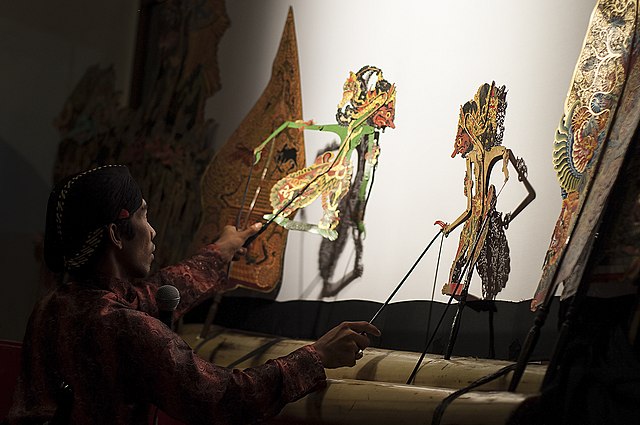Shadow play, also known as shadow puppetry, is an ancient form of storytelling and entertainment which uses flat articulated cut-out figures which are held between a source of light and a translucent screen or scrim. The cut-out shapes of the puppets sometimes include translucent color or other types of detailing. Various effects can be achieved by moving both the puppets and the light source. A talented puppeteer can make the figures appear to walk, dance, fight, nod and laugh.
A performance of wayang, an Indonesian shadow puppet form
Cambodian shadow puppet depicting Sita
This Chinese shadow puppet is illustrative of the ornate detail that goes into the figures. From the collection of The Children's Museum of Indianapolis.
Chinese shadow puppetry is a form of theater whereby colorful silhouette figures perform traditional plays against a back-lit cloth screen, accompanied by music.From Kaifeng Prefecture.
Tholu bommalata is the shadow puppet theatre tradition of the state of Andhra Pradesh in India with roots dating back to 3rd century BCE. Its performers are part of a group of wandering entertainers and peddlers who pass through villages during the course of a year and offer to sing ballads, tell fortunes, sell amulets, perform acrobatics, charm snakes, weave fishnets, tattoo local people and mend pots. Tholu bommalata has a history of consistent royal patronage. It is the ancestor of Wayang, the Indonesian puppet theatre play which has been a staple of Indonesian tourism and designated by UNESCO as Intangible Cultural Heritage of Humanity.
Hanuman and Ravana in Tholu bommalata, the shadow puppet tradition of Andhra Pradesh





